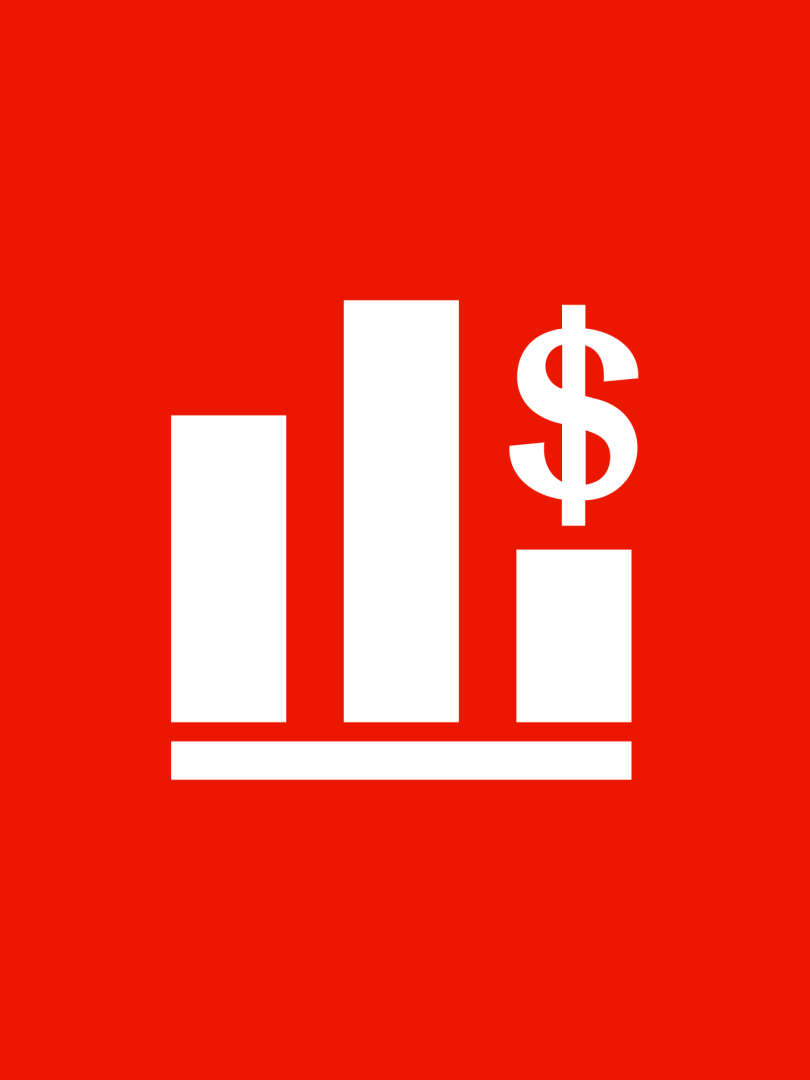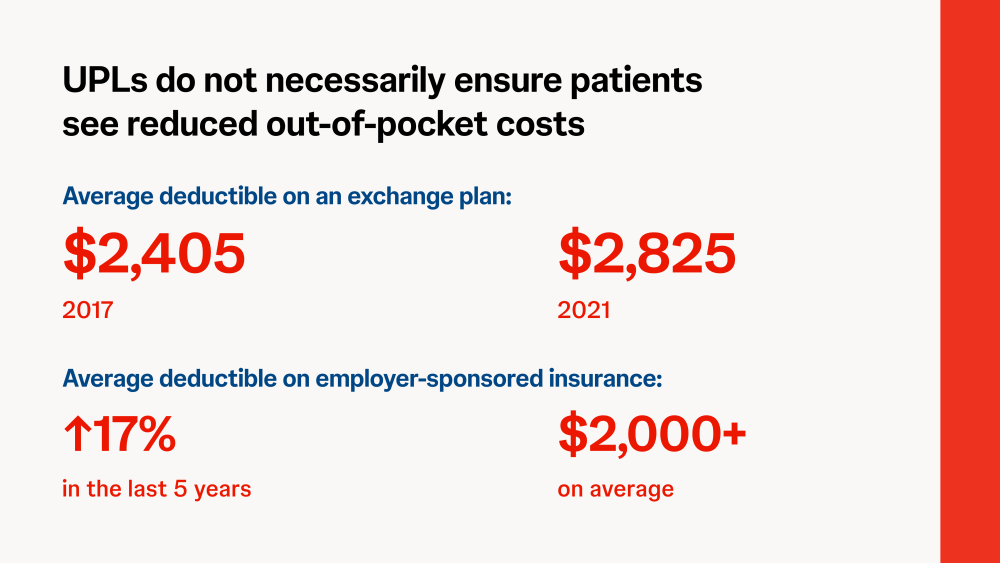- Home
- Research areas
- Research: Value
- Influence of Prescription Drug Affordability Boards and Upper Payment Limits on state drug pricing
Upper Payment Limits (UPLs) likely will not help states achieve all of their intended goals and could create new negative consequences, such as reduced access and larger out-of-pocket burdens for patients and a reduction in reimbursement for providers. States seeking to implement UPLs should consider the downstream consequences of price setting, as UPLs’ value may be limited—if not detrimental—in the long term.

Value is not at the center of PDAB reviews
In 2017, the National Academy for State Health Policy (NASHP) developed model prescription drug affordability board (PDAB) legislative language including a definition of prescription drug price setting through UPLs.
NASHP’s framework does not, however, require that the value of the drug or the patient benefits be considered when determining a UPL.2
NASHP’s framework does not, however, require that the value of the drug or the patient benefits be considered when determining a UPL.2
NASHP’s framework does not, however, require that the value of the drug or the patient benefits be considered when determining a UPL.

Affordability ecosystem and future outlook for state drug pricing
Intended outcomes of UPL setting
States are turning to UPLs as a way to reduce drug spending, lower patient out-of-pocket (OOP) costs and improve patient adherence and access. Additionally, state policymakers are using PDABs to examine relationships between payers, PBMs, manufacturers and other stakeholders as they set UPLs.

Reduction in state spending on prescription drugs

Patient OOP cost reductions

Increased transparency

Benefit design and patient access
UPL setting for select drugs may shape payer and PBM decision-making in ways that could work counter to PDAB’s primary intent and increase patient cost sharing or reduce patient access.
Payer and PBM benefit design changes due to UPLs will have a higher likelihood of adversely impacting patient access, especially in states (e.g., Colorado, Washington) where UPLs will be applied to an unlimited amount of products post-2027.
Payer and PBM benefit design changes due to UPLs will have a higher likelihood of adversely impacting patient access, especially in states (e.g., Colorado, Washington) where UPLs will be applied to an unlimited amount of products post-2027.
A partial list of additional impacts:
-
Patient choiceAs UPLs grow, payers may consider removing themselves from state-regulated markets because of their decreased ability to make a profit based on the spread.
-
Provider reimbursementUPL reimbursement pressures could also prompt providers to change referral, prescribing and acquisition patterns for drugs subject to price setting.
-
Investment in R&DAs manufacturers evaluate the therapeutic areas likely to be subjected to UPLs, they may reassess investment in research and development (R&D) for new therapies.
Cascading changes to prescription drug price reporting
-
UPL implementation will place downward pressure on a broad range of healthcare stakeholders, including through price reporting metrics such as Medicaid Best Price (BP), Average Manufacturer Price (AMP) and Average Sales Price (ASP). These changes would have consequences that alter pricing outside of the intended markets.
-
Medicaid best price:
If a UPL were to reset BP, markets outside of the UPL state would be affected as a lower BP would alter Medicaid Drug Rebate Program (MDRP) calculations and increase the manufacturer’s MDRP liability in all states.3ASP:
If ASP is lowered due to a UPL, providers reimbursed on an ASP basis (e.g., ASP+6%) would face lower reimbursement, impacting providers outside of UPL states.340B pricing:
Changes to best price and AMP resulting from UPLs will alter the 340B ceiling price (i.e., decreases in AMP could result in 340B entities nationwide purchasing drugs at higher prices).

Future of PDABs and UPLs
The long-term consequences
-
Much of PDABs’ efficacy hinges on the ability to produce valuable solutions that work across the drug pricing supply chain and the unproven assumption that cost savings will be passed onto patients. Future negative effects of price setting may include:
-
- Alteration of payer and PBM benefit designs across states and markets due to lowered reimbursement for products.
- Changes in both payer and PBM contracting, as well as manufacturer contracting for products, altering provider reimbursement, 340B contracting and Medicaid rebates.
- Reductions in manufacturer innovation and research in high-value areas subject to price limits, similar to the effects of the IRA.
- Alteration of payer and PBM benefit designs across states and markets due to lowered reimbursement for products.
States seeking to implement UPLs should consider the downstream consequences of price setting, as UPLs’ value may be limited—if not detrimental—in the long term.
Citations
All citations
- Bobby Clark and Marlene Sneha Puthiyath, “Can State Prescription Drug Affordability Boards Address High-Cost Drug Prices?” The Commonwealth Fund. October 11, 2022. https://www.commonwealthfund.org/blog/2022/can-state-prescription-drug-affordability-boards-address-high-cost-drug-prices#:~:text=What%20Is%20a%20Prescription%20Drug,varies%20from%20state%20to%20state. Accessed December 7, 2023.
- National Academy for State Health Policy. “An Act to Reduce the Cost of Prescription Drugs by Establishing a Prescription Drug Affordability Board.” https://eadn-wc03-6094147.nxedge.io/wp-content/uploads/2022/08/2022-PDAB-Model-Act_Form_080222.pdf. Accessed December 7, 2023.
- Rachel Dolan, “Understanding the Medicaid Prescription Drug Rebate Program.” Kaiser Family Foundation. November 12, 2019. Accessed December 7, 2023.
